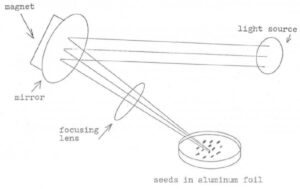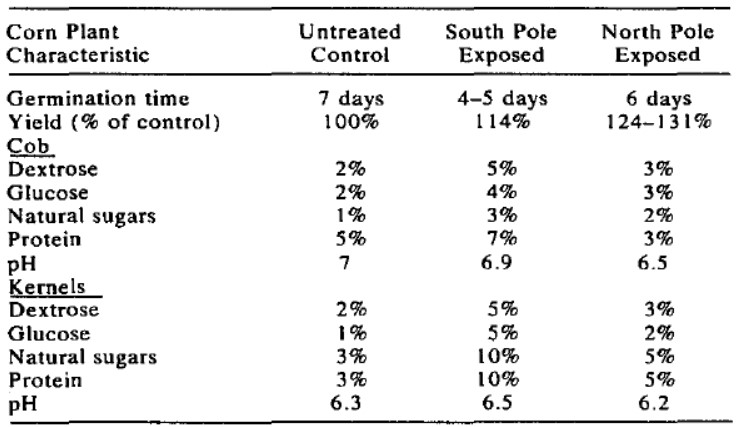Seed Treatments
Nowadays many seeds are treated with neonicotinoids and other harmful chemicals. Neonicotinoids are used in agriculture to protect crops from insects but they impact bees’ ability to forage for nectar, learn, and remember where flowers are located. This is not the kind of seed treatment we should be doing.
With electroculture methods we can increase the germination rate of the seeds and in many cases even the growth rate of the plants, all without hurting bees or any other pollinators. The methods I am aware of consist of exposing seeds to light, or a magnetic field, or a high voltage electrostatic field. What follows is an explanation of how to apply each of these methods.
The Light Method
This innovative method involves using a powerful light source, such as a car headlight, directed onto a mirror that has a 500,000-gauss magnet positioned behind it. The process works as follows:
Light Reflection: Shine the bright light onto the mirror to reflect the light.
Focusing the Light: Use a 10x lens or higher to focus the reflected light onto seeds placed in an aluminum foil container. The foil serves as an effective reflector, directing concentrated light onto the seed scars, known botanically as hilums.

The Impact of Magnetic and Light Stimulation
During this process, the combination of magnetic and light stimulation causes the seed scars (hilums) to open up. This opening allows for increased absorption of essential elements, including:
Water
Carbon Dioxide
Oxygen
Liquid Fertilizer (if used)
As a result, this method accelerates seed germination and leads to faster plant growth. Interestingly, using a magnifying glass, you can observe the openings of the seed scars, providing a fascinating glimpse into this dynamic process.
The Magnetic Field Method
Research indicates that many seeds germinate and grow approximately two times faster when exposed to the north pole of an artificial magnetic field prior to planting, compared to seeds that are not exposed. Notably, wheat seeds exhibit an astonishing growth rate, sprouting about five times faster in the first 48 hours after exposure. In some species, this accelerated growth rate can persist until they reach maturity.

The effects of magnetic treatment prior to germination seem to remain active in certain seeds for at least 18 months post-application. Interestingly, the duration of exposure plays a crucial role in growth response.


